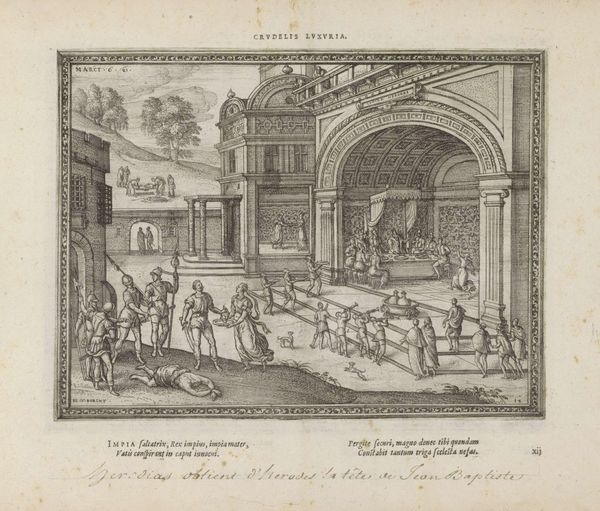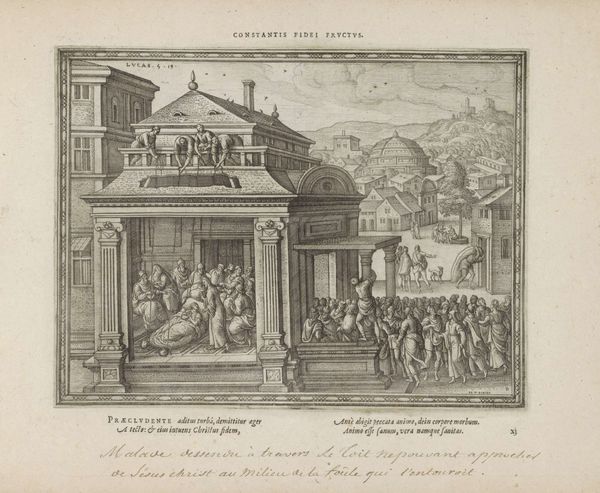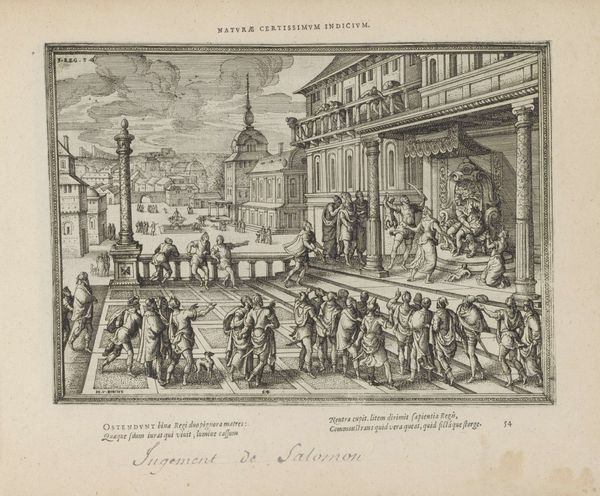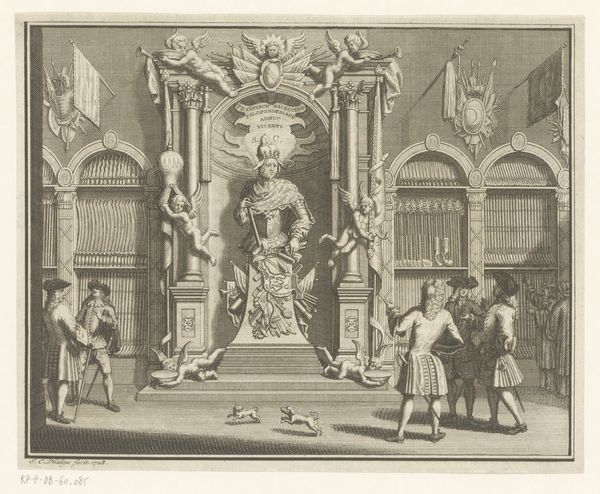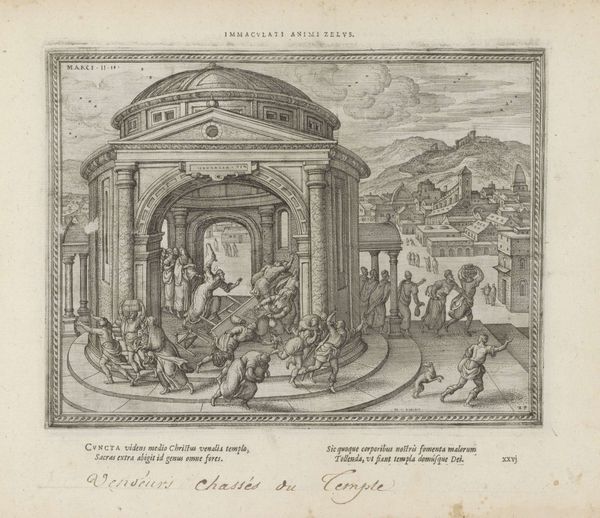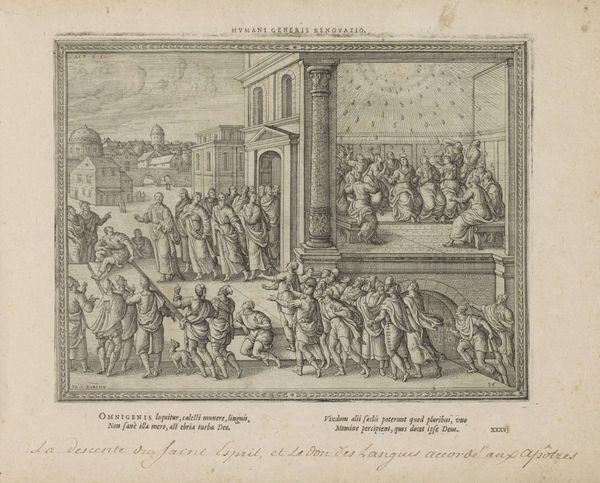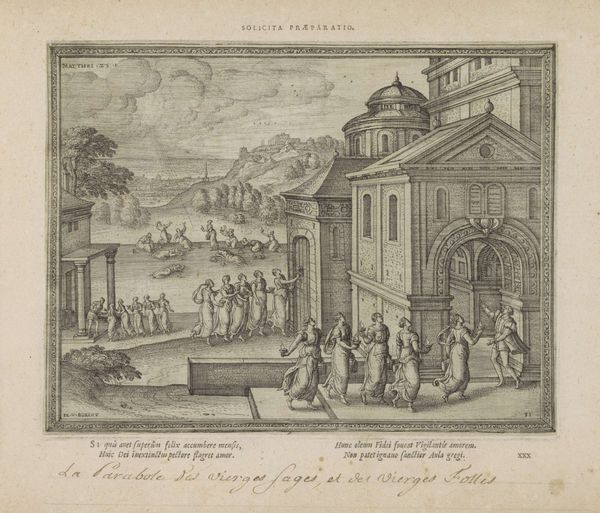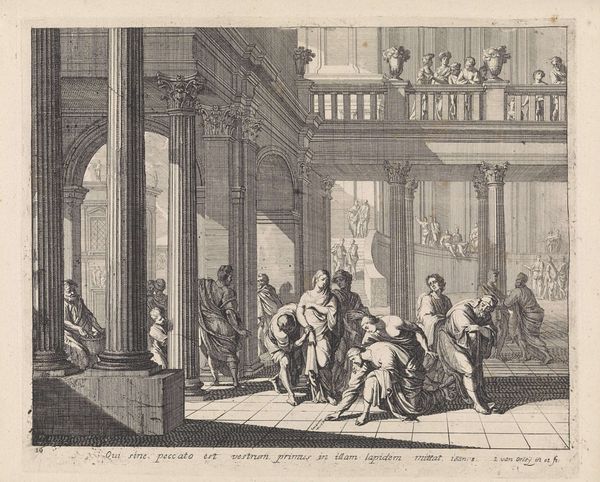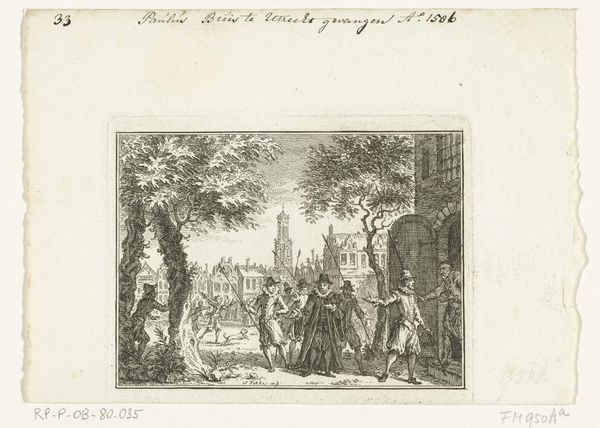
Christus voor Annas en de verloochening van Petrus 1582 - 1613
0:00
0:00
pietervanderiborcht
Rijksmuseum
print, engraving
# print
#
old engraving style
#
11_renaissance
#
history-painting
#
engraving
Dimensions: height 185 mm, width 242 mm
Copyright: Rijks Museum: Open Domain
Editor: This engraving, "Christ before Annas and the Denial of Peter," made by Pieter van der Borcht sometime between 1582 and 1613, is quite intricate. I'm struck by the level of detail achieved with just lines and the depiction of what looks like both an interior and an exterior scene in the same frame. How do you read this piece, especially considering its medium and time? Curator: Looking at this engraving, it's important to consider the social and economic context of printmaking during the Renaissance. Engravings like this weren't just art objects, they were reproducible commodities. Van der Borcht, through his labor and the printmaking process, is essentially mass-producing a biblical scene for wider consumption. It democratizes access, in a way. Notice the lines; they create not just form but texture, almost mimicking fabric. What kind of statement does that tell you, in terms of its time? Editor: So you're saying the medium itself is a crucial part of understanding its meaning? The fabric detail makes me think, perhaps the work elevates what could be deemed common into a luxurious display of labor through form? How might the commercial aspect have affected artistic choices? Curator: Precisely. The choice to depict texture meticulously would be partly driven by consumer demand, perhaps a selling point to stand out. Furthermore, think about the cost of materials: the copperplate, the ink, the paper. How readily accessible were these? Production dictated the reception. Did people even view it as art, or as religious iconography readily for sale? Editor: It's interesting to consider this artwork not just for its artistic merit, but for the processes, economic exchanges, and available tools involved. Thanks, this gives me a much better material understanding. Curator: Indeed. By exploring the conditions of production, we uncover a richer understanding of its cultural significance and historical moment. It highlights the art itself in relation to labor practices.
Comments
No comments
Be the first to comment and join the conversation on the ultimate creative platform.


